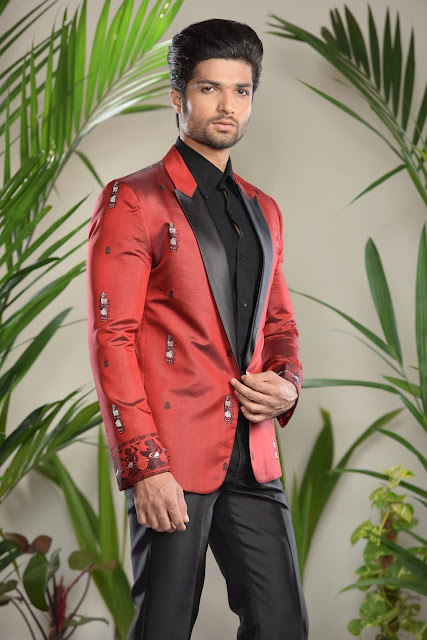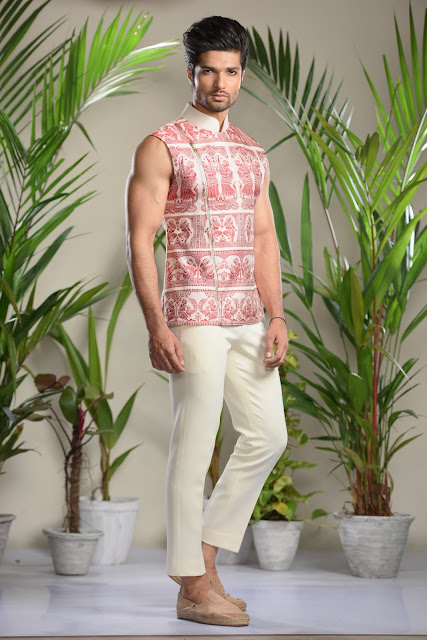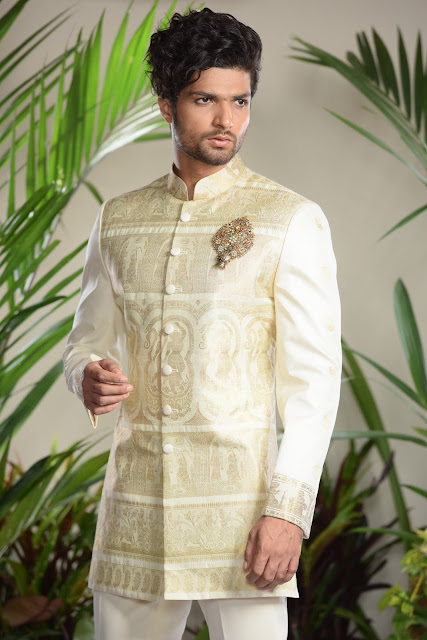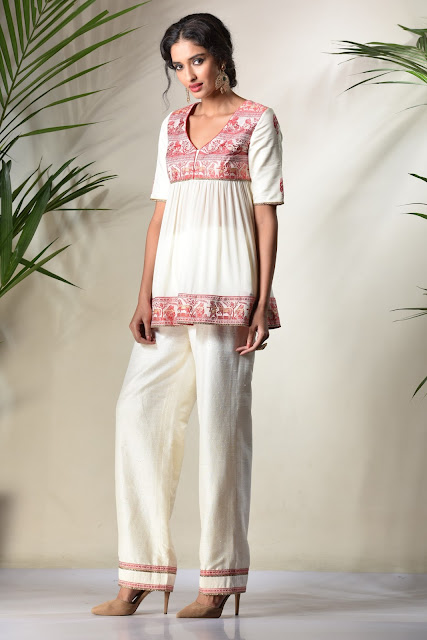India 24 August 2016: The design concept for the Festive/Winter 2016 collection of Lakme Fashion Week is the “Revival of the Baluchori”. It is inspired by the philosophy behind the label that juxtaposes the old with the new. Baluchori- the story-telling weave originated in Bengal 200 years ago in the 18th Century and is known for depictions of mythological scenes on the pallu and the border of the sari. It was mainly produced in Murshidabad but presently Bishnupur and its surrounding areas of West Bengal where the handlooms are now found. It has been eulogized as the “loveliest and most charming of all silks of India”. The Baluchori Sari has also been granted the status of Geographical indication in India.







The motifs are mainly derived from social & religious customs, depictions from scenes of Mahabharat and Ramayana and they had a square design in the pallu with paisley motifs in them. The depicted scenes in the sari further evolved into the lives of the Nawab of Bengal featuring women smoking hookahs, nawabs driving horse carriages, and even European officers of the East India Company. An important feature of the technique is the white outlining of the motifs.
The Murshidabad variety of less twisted mulberry silk yarn was originally used in Baluchori sarees. Coarser silk varieties like matka silk were also used some time back. Later, it was replaced by 18/20 D(2ply) organize silk yarn for warp and single yarn of Malda variety mulberry silk in 3 ply is used for weft. 96s to 100s steel reed is normally used for Baluchori saree weaving and the extra warp designs are woven with Jacquards replacing’ Jala’ technique of olden days.
The original Baluchori sarees in Murshidabad in the 18th and 19th centuries were woven on the traditional jala looms, where jala refers to the reference design which is first made, and is used as the master design from which many copies can be made repetitively for weaving the sarees. The process was very elaborate, taking between 15-18 weeks to weave a saree and gave rise to a large variety of very intricate patterns. During the revival of baluchori weaving in the 20th century jala was replaced by the jacquard technique of weaving. Here, the design is first drawn on a graph paper and then punched into cards accordingly. These cards are then arranged sequentially, sewed together and finally fixed into the jacquard machines. The jacquard technique is simpler and faster, reduces the weaving time to 1 or 2 weeks, but is not as flexible as the jala technique and cannot produce patterns with as much diversity or intricacy.
We have used the Baluchori weave to make modern and striking contemporary Festive/Winter silhouettes. The modern silhouettes comprise a range of outfits from western floor lengths to traditional lehengas. The color palette of this collection ranges from classic creams, reds, magentas and gold to edgy blacks keeping the winter shades in mind.
The artwork and techniques used in this collection are the Japanese kirigami self on self work, zardozi embroidery and aari grace work which enhances the look of the Baluchori in elegant and subtle ways. The collection is crafted with elegance and grandeur to make the outfits appropriate for both day and night wear making them a flexible piece in woman’s wardrobe. Bengal is famous for its unique craftsmanship and artistic values. We have deliberately chosen a local state fabric in an attempt to help the locality of the Baluchori family in Bishnupur. The idea was to be local and think global at the same time while keeping our focus firmly of the beautiful artwork of the Baluchori textile and design from Bishnupur in Bengal. We have made a conscious effort to assimilate the current spirit of “Make in India” into our collection.
